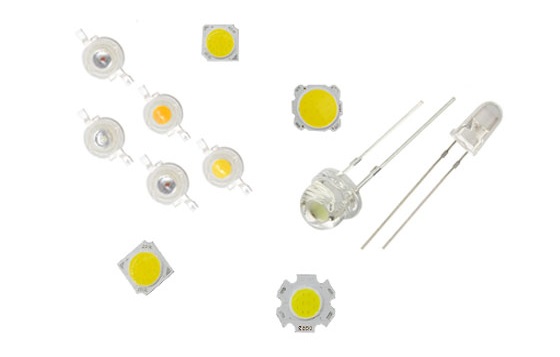Release time:Jun 27,2022View:28957
Definition of LED
LED is short of light-emitting diode, it is a semiconductor unit that designed to emit light when the electrical current goes through it. The principle operation of LEDs is based on spontaneous emission, their output efficacy is about 90% more than that of incandescent light bulbs and tungsten halogen lamps, that is why most heated filament bulbs are being replaced by led lights.

Types of LED
Over the last 2 decades LED lighting has developed considerably, making it possible for incredibly innovative lighting implementations all around the world. Three types of LED had been used most for modern businesses, they are DIP LEDs (Dual In-line Package), SMD LEDs (surface mount diode) and COB LEDs (chip on board).
Colors of LED
The LEDs are made from compound semiconductor materials such as Silicon Carbide, Gallium Arsenide Phosphide, Gallium Indium Nitride and Gallium Arsenide are all blended with each other in various proportion to generate a unique distinct wavelength of color, each individual wavelength appears as light of different color. That is to say the semiconductor’s material determines the colors of LED, the quantity of colors produced from LED is actually limitless.
The most common available colors of LED are red, green, blue, white and amber. Red, green and blue combine together will get you a white color, with combination of 8-bit RGB LED you can get 16.78 (2563) million colors, while 16-bit RGB can present 281.4 quadrillion colors.

Applications of LED
In modern society, LED had been used in a wide range of business fields, you can experience it day in day out.
Smart electronic devices
Traffic signaling
Automotive Lighting
Dimming of LED lighting
TV and LED display
Medical equipment
Alarming system
Aviation lighting
And a lot more as you can easily tell.
Advantages of LED
LED are now using in all aspects of our daily life, they are everywhere such as business centers, public squares, airports, homes, roads,
any interior and exterior applications.
Below are the factors that explain it a lot:
Highly efficient – LED lighting out capable of outputting over 100 lumens per watt
Durable – Normal LED has 50,000 hours lifetime and low maintenance
Environmentally friendly – No UV emission, no mercury or other toxic chemicals
Inherently controllable – Can be programmed for colors and brightness
Dimmable – Performing well at almost any power percentage from 5% to 100%
Extraordinary color range – Infinite color acheivable
All-weather workable – Working from minus 40° to 50°
Instant on – No warm-up period, lighting on in nanoseconds
Flexible design – Small enough to suit various needs
Directional Emission– Lighting emitting at 180°, no waste
Outstanding CRI – Excellent rating on color rendering index
Sturdy – Solid state light (SSL), no filament no bulb no tube
Safe – Low voltage, current driven device to
Disadvantages of LED
Like any other technology, LED has its flaws too, some cons listed below:
Higher up-front cost – More expensive than traditional lighting
Temperature sensibility – Quality highly depends on ambient temperature
Area light source – Not a point source of light, but a Lambertian distribution
Mixed quality – Whole industry flooded with both qualified and disqualified items
Shenzhen, China 518103

